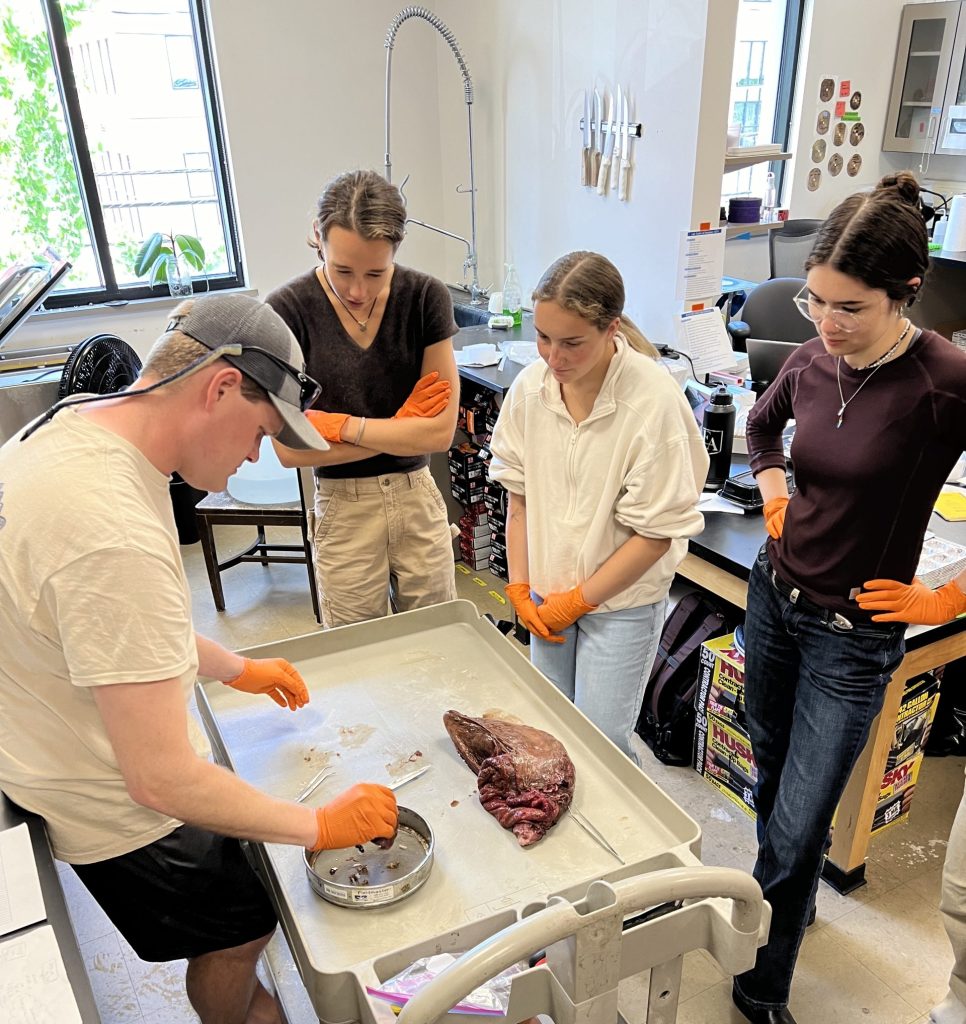TUNAS
Globally, commercial tuna fisheries account for more than $33 billion and conservative estimates including their recreational component exceed $45 billion. While their value is high, our understanding of their life history is not.
There are several tuna species that we conduct research on to better our understanding of their life history, but our primary focus is on Atlantic bluefin tuna in the Gulf of Maine.
Genetics for Giants & Juvies

Atlantic Bluefin Tuna Biological Sampling Program
There are several research projects and efforts directed towards understanding more about the life history of Atlantic bluefin tuna. Every season, the lab collects over 1500 Atlantic bluefin tuna samples including heads, stomachs, and livers. These samples come from various sources including commercial dealers, local Atlantic bluefin tuna tournaments, commercial fishermen, recreational fishermen, and more. We would like to acknowledge that the research we conduct in the Pelagic Fisheries Lab would not be possible if it were not for industry involvement and collaboration. We thank every individual who helps us obtain these samples every field season.
Dissection Process
Once we collect Atlantic bluefin tuna heads, we make sure they are iced down to preserve freshness. We remove muscle tissue samples for genetic testing as well as an archive sample to save for later projects. We also extract otoliths, small calcified structures located in the brain cavity of Atlantic bluefin tuna, which are used to estimate the age of the fish when it was caught and where the fish was spawned (stock of origin).

The micro-mill work is conducted by the Kerr Lab of the University of Maine for their project on “Evaluating Age Structure, Aging Bias and Mixed Stock Composition of Atlantic bluefin tuna in the Northwest Atlantic”.
To learn more about the project & the Kerr Lab, visit their website!
otolith aging & microchemistry
After extracting otoliths from the Atlantic bluefin tuna head, there are several different processes that need to occur to prepare otoliths for aging and micro-milling.
For aging, tuna otoliths form annuli, which resemble “tree rings”. These rings represent fast & slow growth rates that display as different shades when observed under a scope with transmitted light. By counting the fast growth bands, we can get an estimate for the number of feeding seasons the fish has lived through which represents the age of the fish, similar to aging a tree by counting the rings presented by growing seasons.
For determining stock of origin, the otoliths are milled using a machine called a micro-mill. At the center of each otolith are chemical markers composed of material accreted by individuals while on their spawning grounds. Based on these chemical signatures, we can estimate if the Atlantic bluefin tuna was spawned in the Gulf of Mexico (Western stock) or in the Mediterranean (Eastern stock). This information is extremely important because, although the stocks are managed separately, there is evidence of some mixing between the two stocks.
Foraging Ecology
As part of an ongoing research effort, the Pelagic Fisheries Lab has collaborated with the Maine Department of Marine Resources to conduct a long-term study on Atlantic bluefin tuna foraging ecology to see what they eat in the Gulf of Maine and how that may change over time.
University of Maine & Maine Department of marine resources collaboration
To learn more about the long-term diet study of Atlantic bluefin tuna in the Gulf of Maine, please check out this link below.







